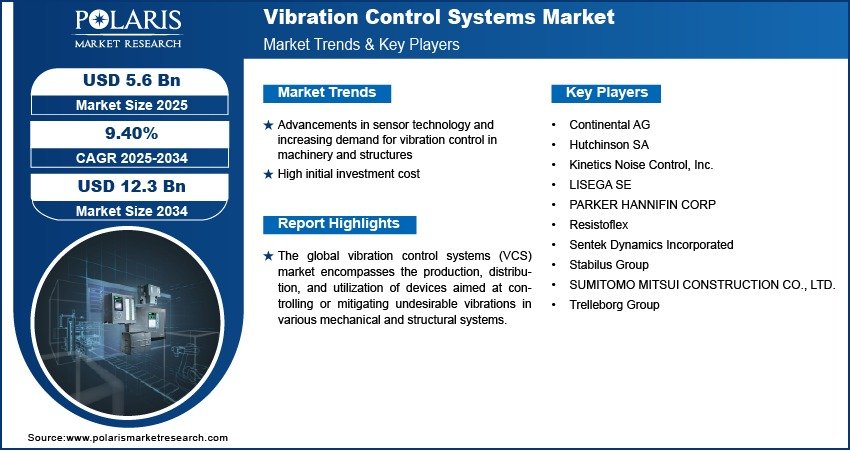Vibration Control Systems Market Projected to Reach USD 12.3 Billion by 2034 | CAGR: 9.40%

Market Size & Forecast
Market size value in 2025 – USD 5.6 Billion
Revenue Forecast in 2034 – USD 12.3 Billion
CAGR – 9.40% from 2025 – 2034
Request for Free Sample:
Market Overview:
The vibration control systems market involves technologies and solutions designed to minimize unwanted vibrations in structures, machinery, and equipment. These systems are essential for protecting infrastructure, enhancing operational efficiency, and ensuring safety across industries such as construction, aerospace, automotive, energy, and manufacturing. Common solutions include isolators, dampers, tuned mass dampers, and base isolation systems that absorb or dissipate vibrational energy. With increasing urbanization, growing industrialization, and rising concerns about structural integrity, the demand for advanced vibration control technologies is steadily rising.
Key Market Opportunities:
One major opportunity lies in the expanding infrastructure development projects worldwide, particularly in earthquake-prone regions where seismic isolation systems are crucial for building resilience. The growth of smart cities and high-rise construction further boosts demand for advanced vibration management solutions. Additionally, the increasing use of precision machinery in industries like semiconductor manufacturing and healthcare creates a need for highly sensitive vibration control. Integration with digital technologies such as IoT-enabled monitoring systems also presents new opportunities for predictive maintenance and real-time performance optimization.
Market Scope:
The vibration control systems market has a broad scope across multiple sectors and geographic regions. North America and Europe lead due to stringent safety regulations and mature industrial bases, while Asia-Pacific is witnessing rapid growth driven by massive infrastructure investments and industrial expansion. The market encompasses both retrofitting existing structures and incorporating vibration control in new constructions. As technology advances and regulatory standards become more rigorous, the market is set for significant expansion, offering diverse applications in civil engineering, defense, transportation, and industrial manufacturing.






